LLE LED Downlight 10W WW
Posted by Marcel van der Steen in Led lights, Light measurements Add comments presents a measurement set of one big downlighter, equipped with one high power led consuming 10 W. Behind this led a big heatsink is mounted. The light is delivered with a power supply converting the grid voltage into the desired led current. In this article the measurement data can be found as well as in Eulumdat format.
See this overview for a comparison with other light bulbs.
Summary measurement data
| parameter | meas. result | remark |
|---|---|---|
| Color temperature | 2650 K | Warm white |
| Luminous intensity Iv | 90 Cd | |
| Beam angle | 108 deg | A wide beam. |
| Power P | 12.0 W | |
| Power Factor | 0.53 | For every 1 kWh net power consumed, there has been 1.6 kVAhr for reactive power. |
| Luminous flux | 250 lm | |
| Luminous efficacy | 22 lm/W | |
| CRI_Ra | 73 | Color Rendering Index. |
| Coordinates chromaticity diagram | x=0.4612 and y=0.4062 | |
| Fitting | 230V | |
| D x H external dimensions | 200 x 100 mm | External dimensions of the downlighter. |
| D dimension luminous area | 90 mm | Dimensions of the luminous area (used in Eulumdat file). Here the matte part of the glass is used. |
| General remarks | The ambient temperature during the whole set of measurements was 20.0 deg C.
Warm up effect: the illuminance decreases with 6 % during the warm up and the power consumption with 3 %, which are small effects. Voltage dependency: consumed power and illuminance are independent from the light bulb voltage For the eulumdat file follow this link. |
Eulumdat lichtdiagram
With this article an eulumdat file is added. This is a file that a.o. indicates the radiation pattern around the light bulb. There are more parameters in the file, and these all can be read with help of the free open source program Qlumedit.
An interesting graph is the light diagram, indicating the intensity in the C0-C180 and the C90-C270 plane.
The light diagram giving the radiation pattern in the C0-C180 and C90-C270 planes.
As the light is symmetrical over z-axis, there is no difference between the lightdiagram for the two planes C0-C180 and the C90-C270.
There seems to be a small reflection in the luminaire, at an angle of 80 degrees. This is visible in a small increase of the luminous intensity at this angle. This is insignificant.
Illuminance Ev at 1 m distance, or luminous intensity Iv
Herewith the plot of the averaged luminous intensity Iv as a function of the inclination angle with the light bulb.
The radiation pattern of the light bulb.
This radiation pattern shows a wide beam.
These averaged values are used (later) to compute the lumen output.
The intensity measurements (of each turn angle) as function of inclination angle.
This plot shows per inclination angle the intensity measurement results for each turn angle at that inclination angle.
When using the average values per inclination angle, the beam angle can be computed, being 108 degrees.
Luminous flux
With the averaged illuminance data at 1 m distance, taken from the graph showing the averaged radiation pattern,it is possible to compute the luminous flux.
The result of this computation for this lamp is a luminous flux of 250 lm.
Luminous efficacy
The luminous flux being 250 lm, and the power of the lightbulb being 12.0 W, yields a luminous efficacy of 22 lm/W.
A power factor of 0.53 means that for every 1 kWh net power consumed, a reactive component of 1.6 kVAr was needed.
| Light bulb voltage | 230 V |
| Light bulb current | 98 mA |
| Power P | 12.0 W |
| Apparent power S | 22.5 VA |
| Power factor | 0.53 |
Color temperature and Spectral power distribution
The spectral power distribution of this light bulb.
The measured color temperature is about 2650 K, being warm white.
Chromaticity diagram
The chromaticity space and the position of the lamp’s color coordinates in it.
The light coming from this lamp is close to the Planckian Locus (the black path in the graph).
Its coordinates are x=0.4612 and y=0.4062.
Color Rendering Index (CRI) or also Ra
Herewith the image showing the CRI as well as how well different colors are represented (rendered). The higher the number, the better the resemblance with the color when a black body radiator would have been used (the sun, or an incandescent lamp).
Each color has an index Rx, and the first 8 indexes (R1 .. R8) are averaged to compute the Ra which is equivalent to the CRI.
CRI of the light of this lightbulb.
The value of 73 is lower than 80 which is considered a minimum value for indoor usage.
Note: the chromaticity difference is 0.0018 indicates the distance to the Planckian Locus. Its value is lower than 0.0054, which means that the calculated CRI result is meaningful.
Voltage dependency
The dependency of a number of lamp parameters on the lamp voltage is determined. For this, the lamp voltage has been varied and its effect on the following lamp parameters measured: illuminance E_v [lx], color temperature CT or correlated color temperature CCT [K], the lamppower P [W] and the luminous efficacy [lm/W].
Lamp voltage dependencies of certain light bulb parameters, where the value at 230 V is taken as 100 %.
The power consumed and the illuminance measurements do not depend on the light bulb voltage applied.
To check whether this dependency can lead to visible changes in illuminance for possible grid voltage changes, it is noted what variations occur when the lamp voltage varies around 230 V + and – 5 V. Then the illuminance varies 0.1 % so virtually no differences seen.
Warm up effects
After switch on of a cold lamp, the effect of heating up of the lamp is measured on illuminance E_v [lx], color temperature CT or correlated color temperature CCT [K], the lamppower P [W] and the luminous efficacy [lm/W].
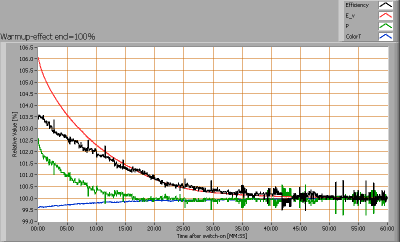
Effect of warming up on different light bulb parameters. At top the 100 % level is put at begin, and at bottom at the end.
No noticeable effects seen. The illuminance decreases about 7 % during the warm up period that takes 1 hour. The power consumption decreases then 3 %. This effect is small and hence there is no meaningful warm up period.

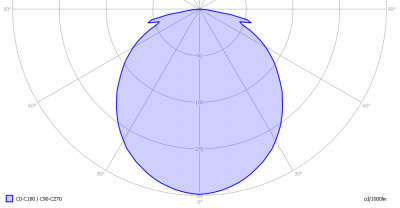
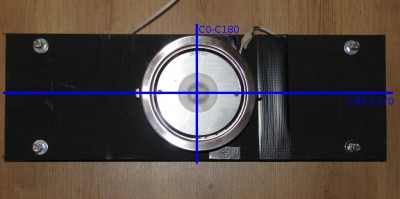
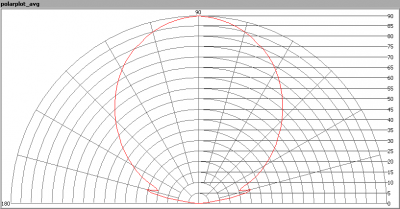
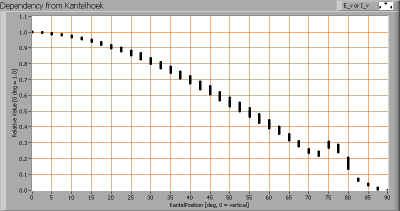
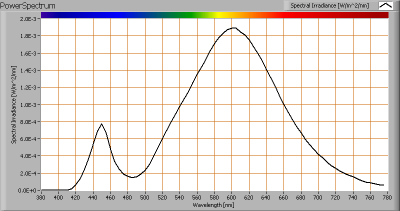
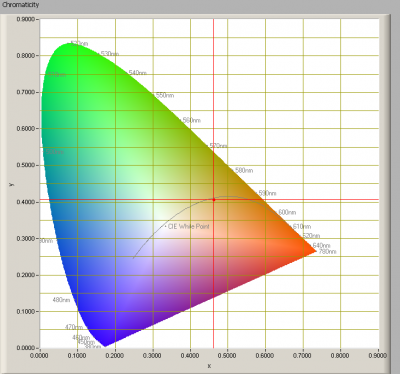
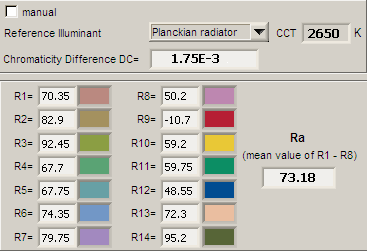
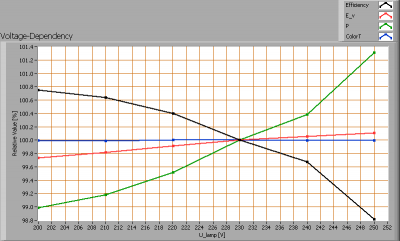
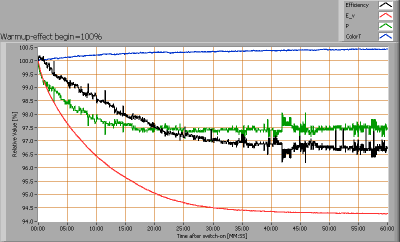
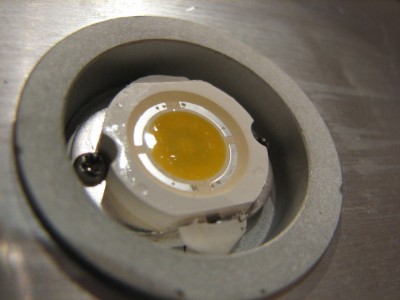



Most popular posts